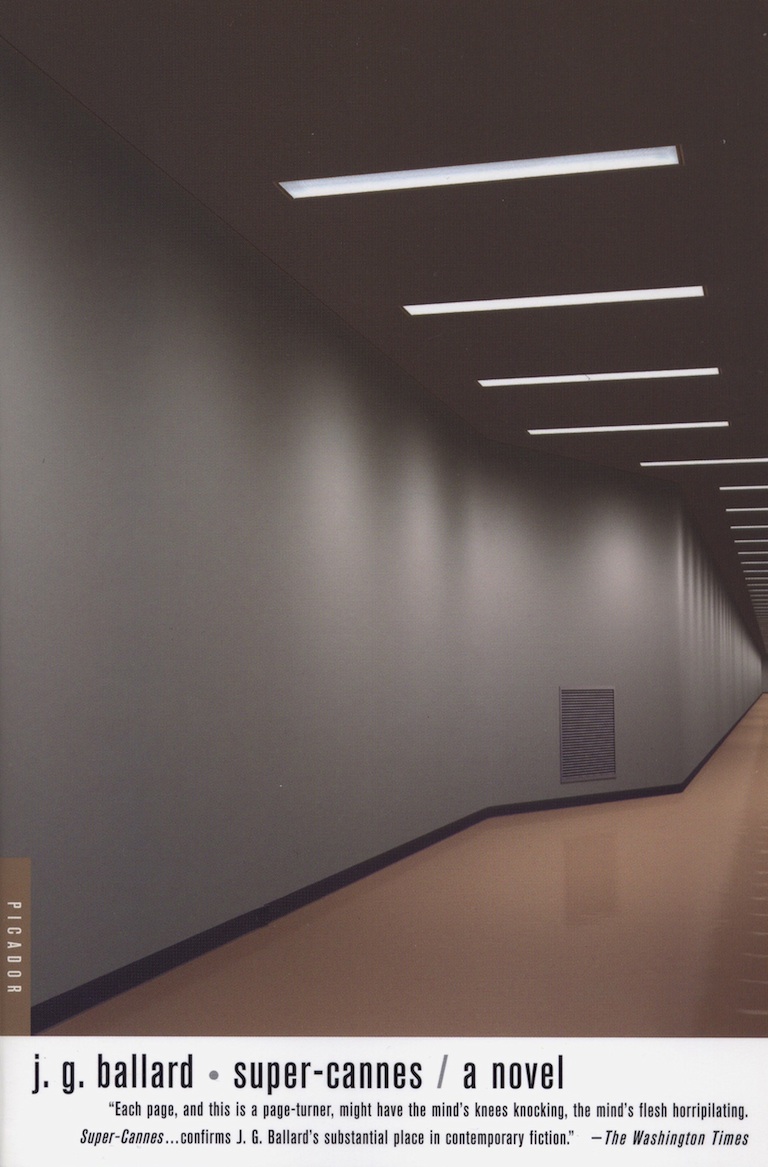
Super-Cannes, published by Picador, 2000. Design: Henry Sene Yee.
Photograph: Craig Kalpakjian
In his novel Super-Cannes, J.G. Ballard includes an introductory note on the geography of the region in the south of France where his alarming story unfolds. The book’s violent events, expressing the emergence of what a character calls a “voluntary and sensible psychopathy,” are set in Eden-Olympia, a fictitious business park located, Ballard writes, “ten miles to the north-east of Cannes, in the wooded hills between Valbonne and the coast.” He mentions several real places that will feature in the novel, beginning with the Marina Baie des Anges apartment complex, the Pierre Cardin Foundation at Miramar and the waterfront development at Port-la-Galère. The particular inspiration for Eden-Olympia, he goes on to say, was the landscaped business park of Sophia Antipolis, a few miles to the north of Antibes.
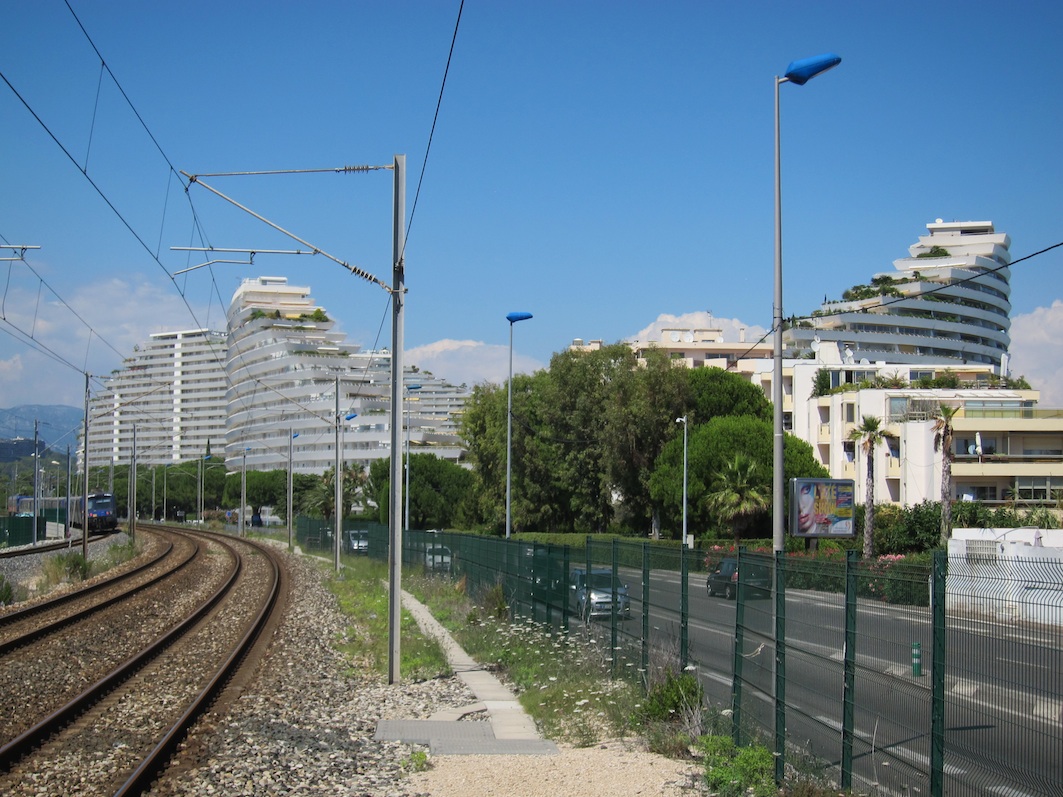
The towers of Marina Baie des Anges, near Villeneuve-Loubet, France, 2014
On a recent vacation, I went to look at Marina Baie des Anges, where one of the book’s main characters has an apartment, and visited Sophia Antipolis, which was clearly fundamental to the genesis of Super-Cannes (2000), although it features only in passing in the story. In Eden-Olympia, Ballard created a parallel version of Sophia Antipolis, nearby in the landscape, which he was then free to mold to suit the book’s provocative speculations. I was curious to see how the novelist had worked his imaginative transformations and I wondered whether it would be possible to take some photographs that captured a manifestly “Ballardian” quality in the locations that fascinated him.
Ballard was a regular visitor to the Côte d’Azur, where he loved to take holidays with his partner of many years, Claire Walsh. “When I travel, it’s usually to the Mediterranean, where I go practically every summer,” he told the Paris Review in 1984. A few years later, talking to Interzone magazine, the south of France was still on his mind, but he wouldn’t want to live there all the time, he said, because expatriates tended to become “sealed off” from the world. By 1991, he had come around and the British interviewer Lynn Barber reported that he’d like to live in Roquebrune when Walsh retired. That never happened, though ten years later Ballard said his favorite beach, where Le Corbusier had a cabin (and died in the sea), was at Roquebrune. Antibes was on his list of desirable residences, too. The area makes a telling appearance as an entry — “Cap d’Antibes” — in Ballard’s short experimental fiction “The Index” (1977) and features heavily in Super-Cannes.
In his novel Concrete Island (1973), Ballard’s protagonist, Maitland, recalls a visit to La Grande-Motte, a futuristic resort complex on the southern French coast, built in the 1960s and 1970s, where he takes a traveling companion. Ballard notes La Grande-Motte’s “hard, affectless architecture with its stylized concrete surfaces,” the hotels and apartment buildings like ziggurats, and the vast, empty parking lots, “like a city abandoned in advance of itself.” The setting was still in his thoughts in 1984 — surely he must have been there? — when he composed a remarkable prose poem, a “surrealist’s catalogue,” as Interzone styled it, titled “What I Believe.” “I believe in Tokyo, Benidorm, La Grande Motte, Wake Island, Eniwetok, Dealey Plaza,” runs one of its many subtly unnerving lines.
Marina Baie des Anges
The first time I saw Marina Baie des Anges, with its “immense curved facades glowing like a cauldron in the afternoon sun” — as Ballard pictures it — from the top of a tower in the picturesque village of Haut-de-Cagnes, I assumed it must be a monstrously over-scaled hotel complex, soaring above everything else on the coastline. The modern ziggurat, concrete-utopia styling makes the marina an architectural cousin of La Grande-Motte. Building began in 1969 and construction of the four interlocking blocks that form a protective enclosure wasn’t completed until 1993. The sinuous walls of the complex, like giant waves or sails, wrap around eight jetties wedged with ranks of yachts, though the moorings are too small to attract the bloated vessels of the super-rich, who berth in nearby Antibes. The most dramatic view of the undulating towers must be from the air above the sea.
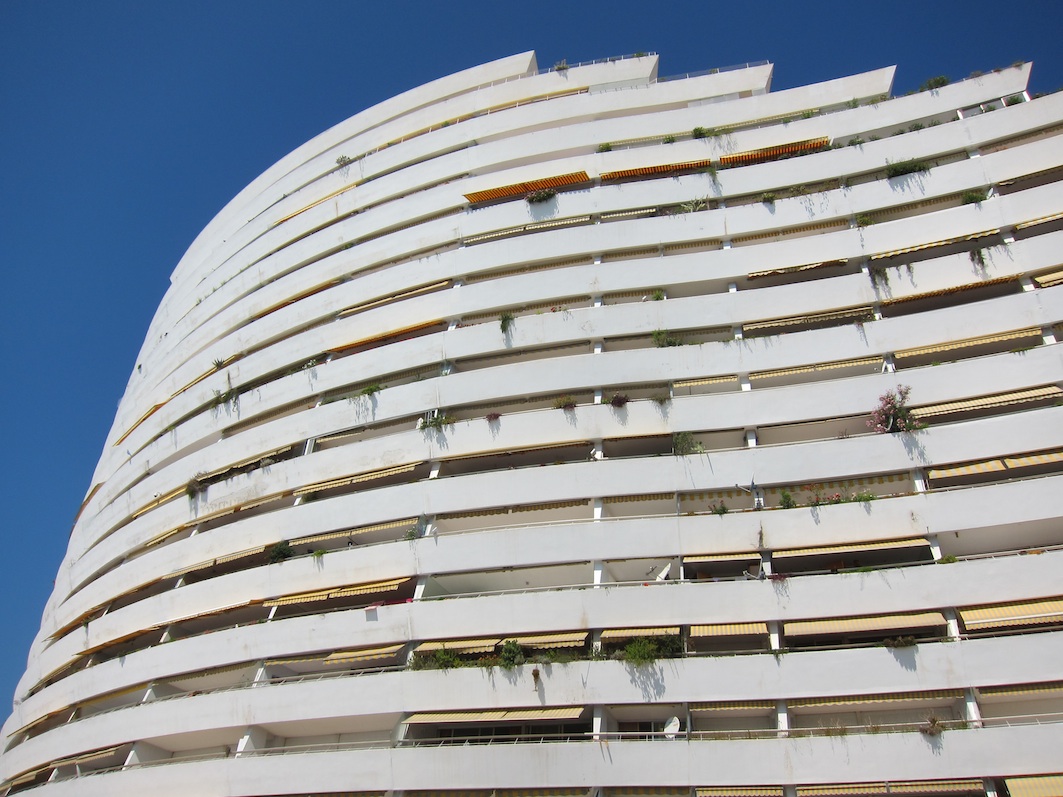
The Amiral tower, Marina Baie des Anges
I entered the marina by following the sea-facing western wall along a stony beach, past a private pool in one of the gardens, with tiers of balconies separated by linear slits stacked high above me. Ballard invokes the complex repeatedly in Super-Cannes, often referring to its curvature — “Logic and reality curved at Marina Baie des Anges” — but he doesn’t describe the place in any detail. Maybe on one of his trips he stopped by to amble along the jetties past yachts with names like Southern Comfort and Velvet Mornings, Flame II and Paradisio III, or had lunch in one of the drowsy restaurants under the palms that fringe the marina.
In the novel, the apartment towers are luxurious residences where high-flying careerists enjoy the rewards of corporate success. As I mooched around, taking photos, I only saw people of retirement age, foreign residents and tourists who were presumably renting for a week or two. Occupants let themselves in and out of the private gardens through locked gates under the gaze of surveillance cameras. A surprising number of empty retail units scattered among the agences immobilières advertising apartments on the higher levels and marine equipment stores selling jet skis suggested that times may be harder today than they were in the 1990s. A waiter told us that local businesses find it a struggle. The marina feels marooned; it has the lugubrious air of a dream unfulfilled, a gigantic architectural folly.
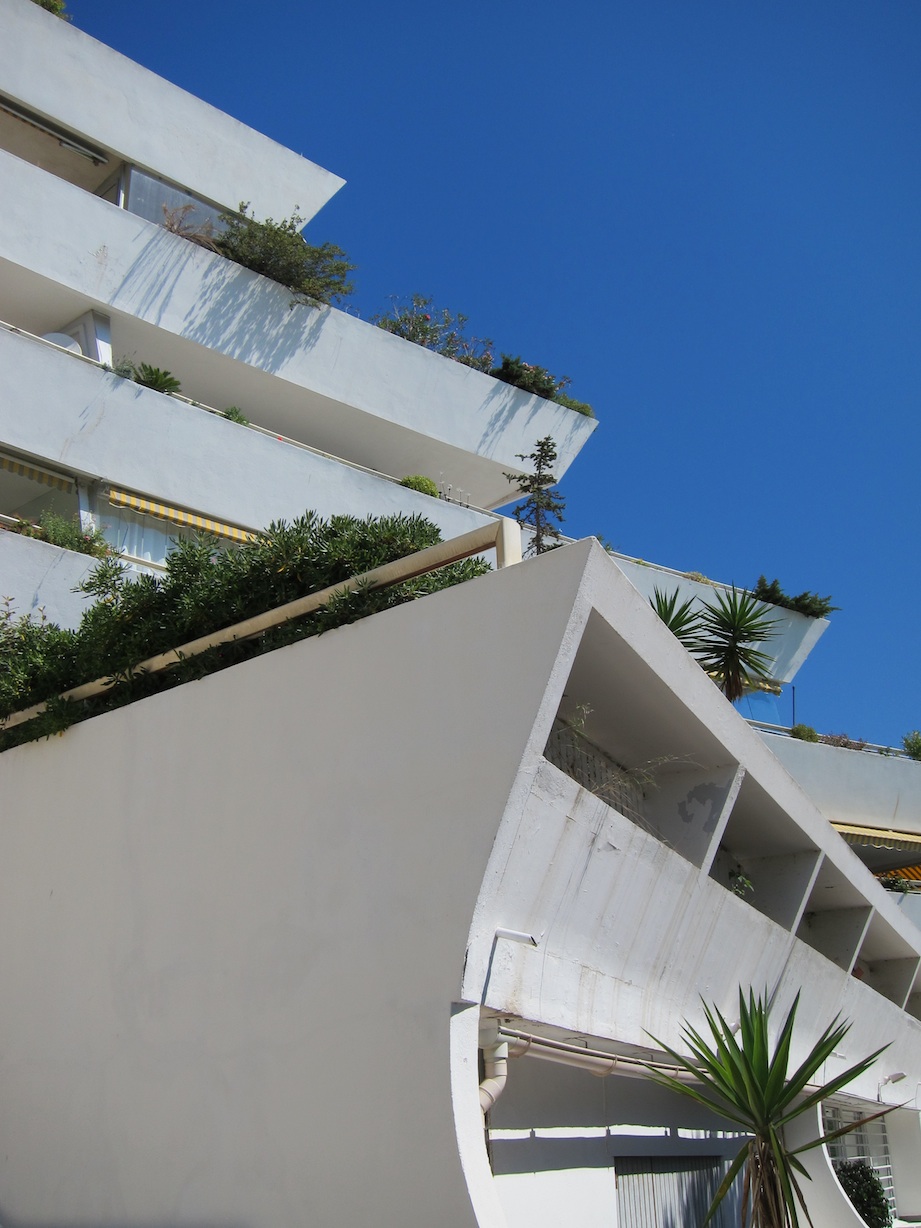
Balconies, Marina Baie des Anges
The site’s concrete immensity and inwardness are certainly Ballardian. Geraniums, agapanthus, bougainvillea and prickly pear colonize the balconies in these becalmed residential towers, where no life seemed to stir, and palm trees flourish on some of the stepped aerial platforms. From some angles, down below at ground level, the complex looks like a blank-surfaced, monumentally futuristic reimagining of a Mesoamerican pyramid, or one of Max Ernst’s petrified lost cities sinking into the jungle. Anything could be going on up there.
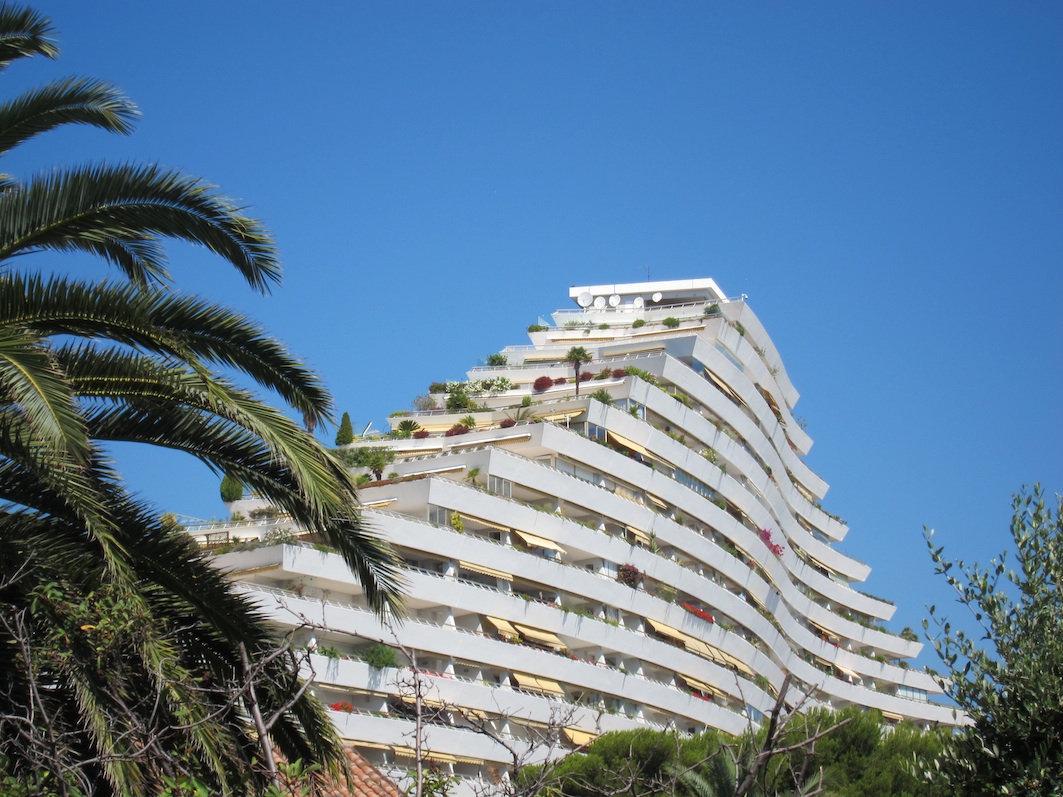
The Commodore tower
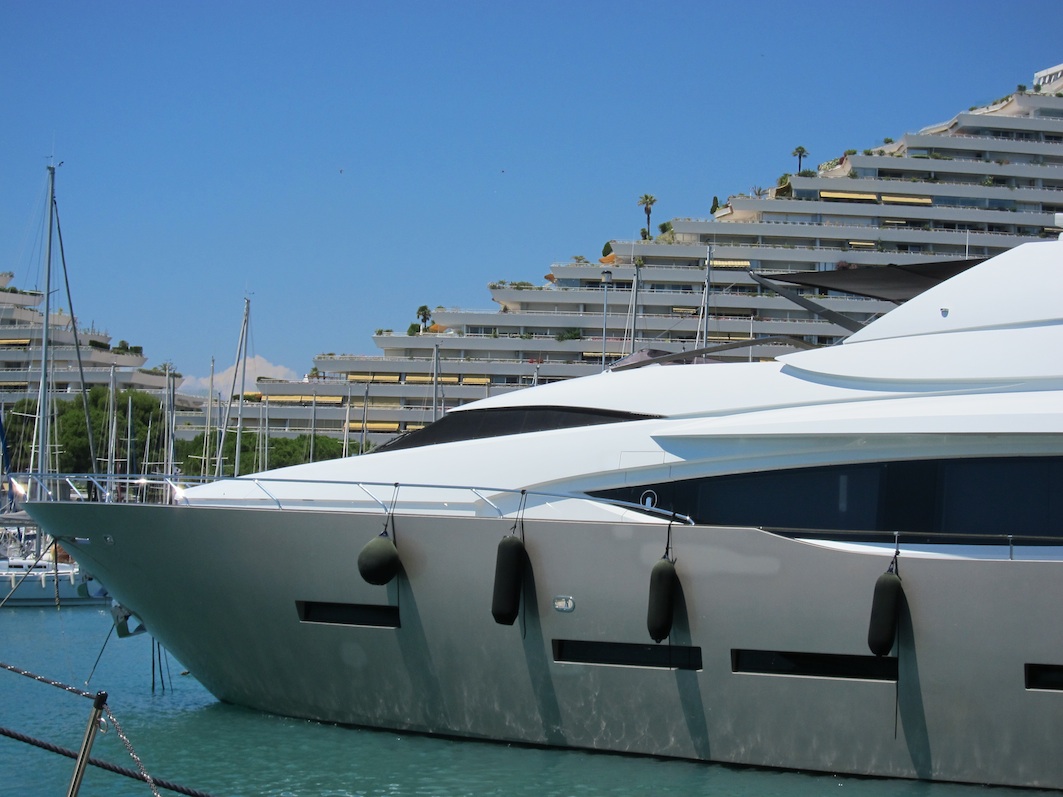 The Commodore tower (left) and Ducal tower from the marina
The Commodore tower (left) and Ducal tower from the marina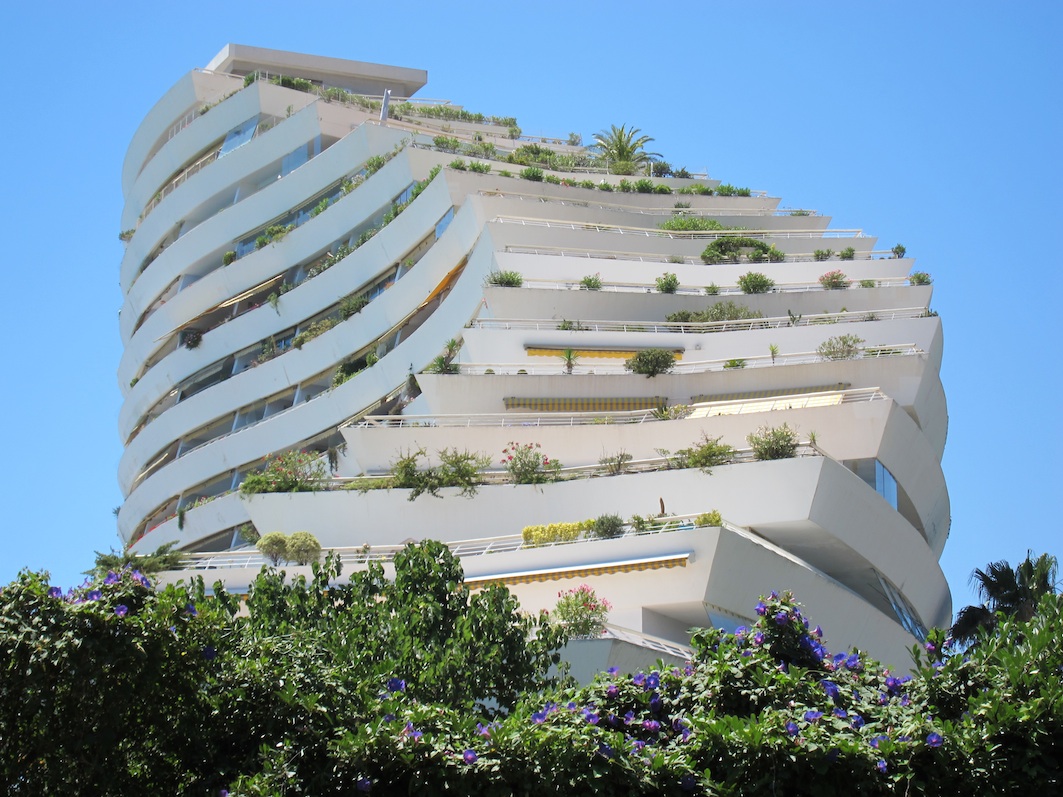
The Amiral tower
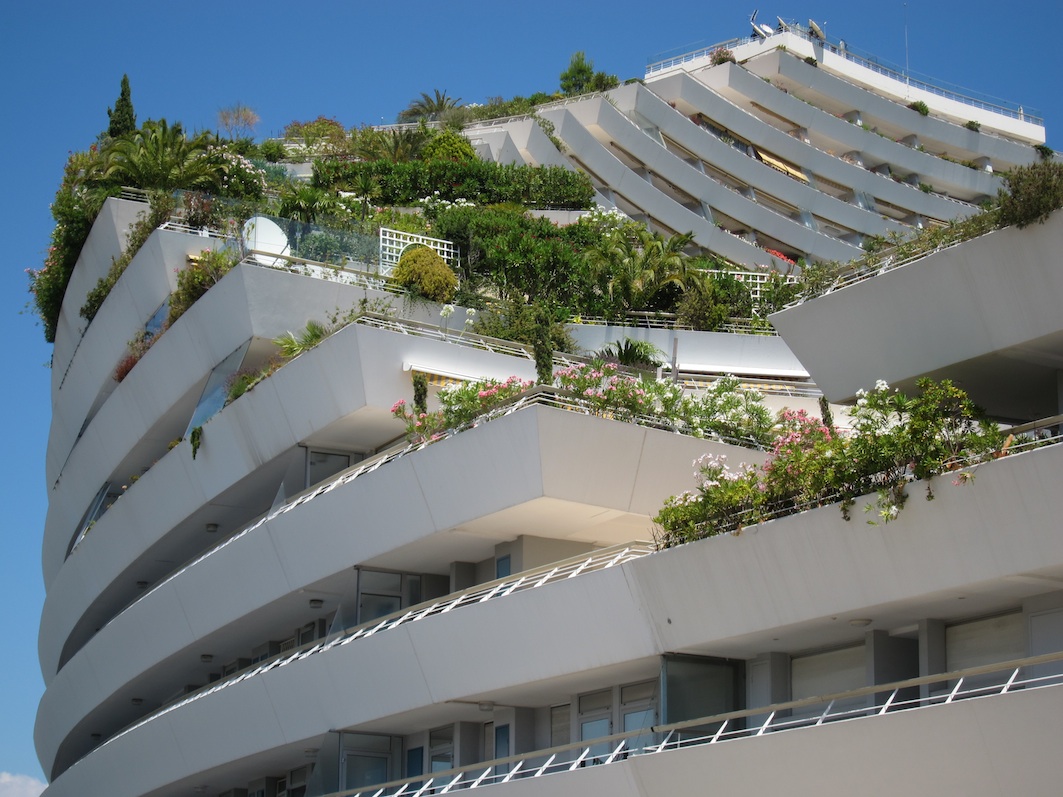
The Commodore tower from the street side
Sophia Antipolis
In Eden-Olympia — “home to the greatest corporations in the world” — something rancid festers. A doctor has run amok, shooting several colleagues. Paul Sinclair, who narrates the story, begins to investigate, while recuperating from a knee injury, and discovers a culture of delinquency and violence among the senior managers. “There’s a remarkable need for punitive violence hidden away in the senior executive mind,” says Wilder Penrose, the park’s in-house psychiatrist, who gradually emerges as sinister ringmaster of this dysfunctional new order. The Adolf Hitlers and Pol Pots of the future, he informs Sinclair, will arise from shopping malls and business parks.
It wasn’t very Ballardian of me, but I arrived in Sophia Antipolis on the local bus. It should have been a Jaguar with a heavy steering wheel, perhaps, like the one Sinclair drives in the book. I got out at Garbejaire, the residential village at the heart of the park. I could already see what the problem was going to be because “park” is the right word. Sophia Antipolis is huge, covering 2,300 hectares, and I was trying to explore it on foot.
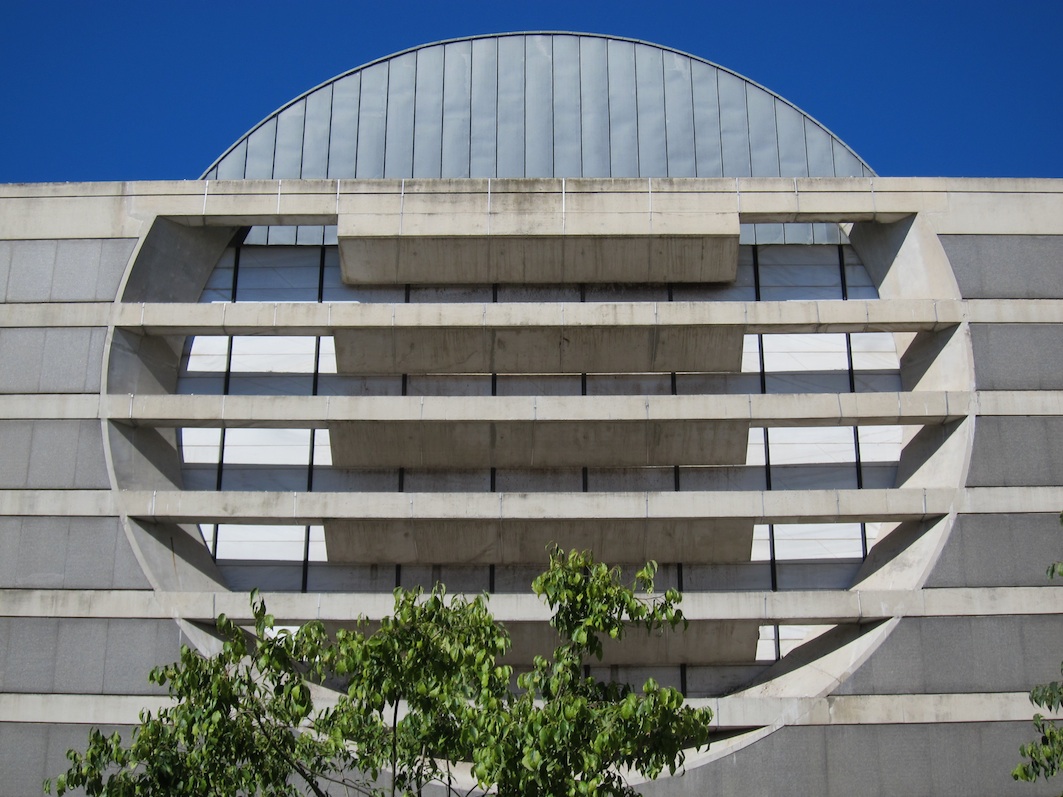 Town hall, Garbejaire, Sophia Antipolis
Town hall, Garbejaire, Sophia AntipolisIn Super-Cannes, Eden-Olympia has a steely architectural presence, though the park doesn’t always sound that big. “I had left the BMW near the main entrance . . . and then walked across the business park to the administration building . . .” On the other hand, “The glass and gun-metal office blocks were set well apart from each other, separated by artificial lakes and forested traffic islands . . .” Ballard makes plenty of references to glass and mirror curtain-walling, glass atriums, ventilation shafts and cable conduits, satellite dishes and microwave aerials. A dome-shaped building houses the personnel department. Stretch limousines ferry executives around and a security helicopter patrols one of the lakes. A brochure about the park offers “a vision of glass and titanium straight from the drawing boards of Richard Neutra and Frank Gehry, but softened by landscaped parks and artificial lakes, a humane version of Corbusier’s radiant city.” (An editor should have spotted that Neutra died in 1970, and the vision sounds more like Norman Fosterish high-tech than the convoluted structures of Frank Gehry.) Office buildings rise from the Corbusian landscape “like megaliths of the future.”
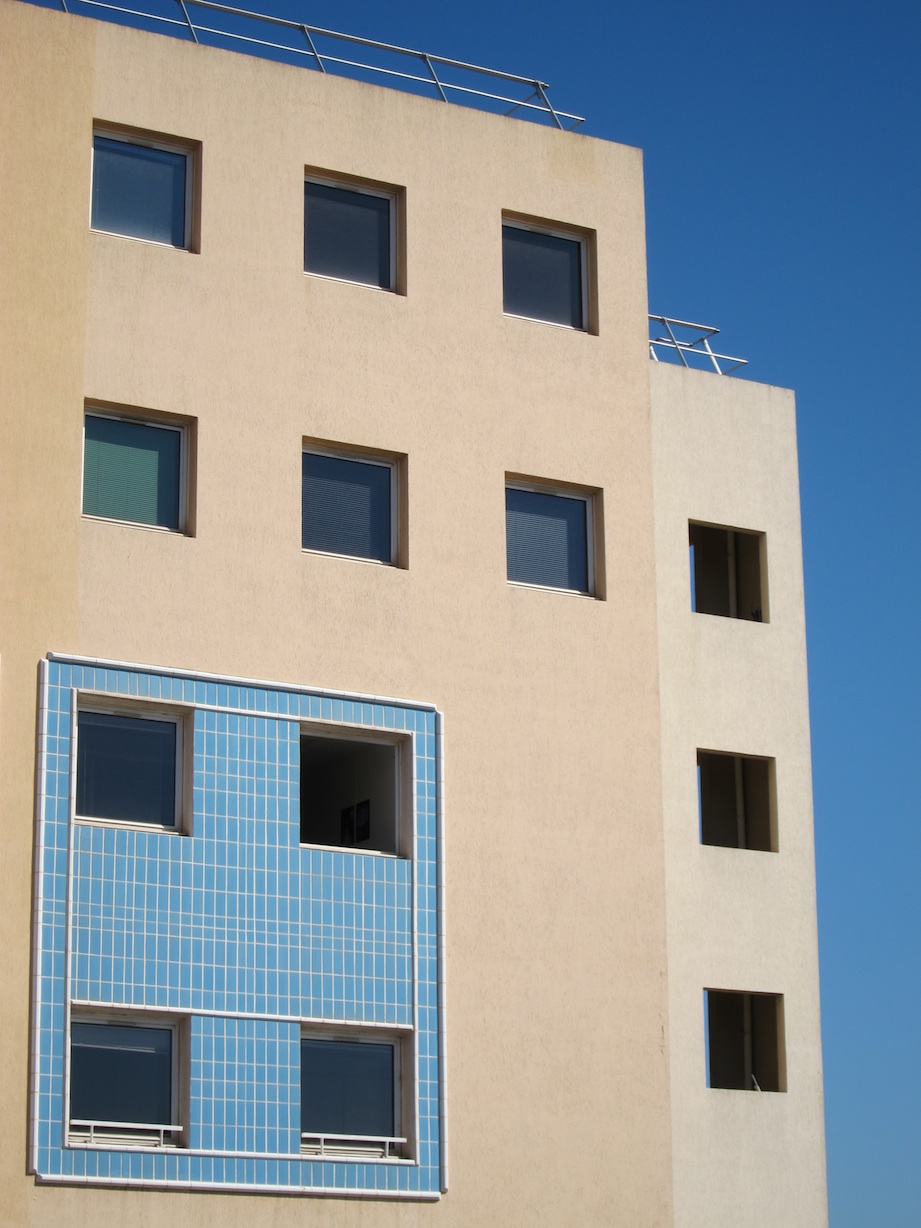
Residential building, Garbejaire
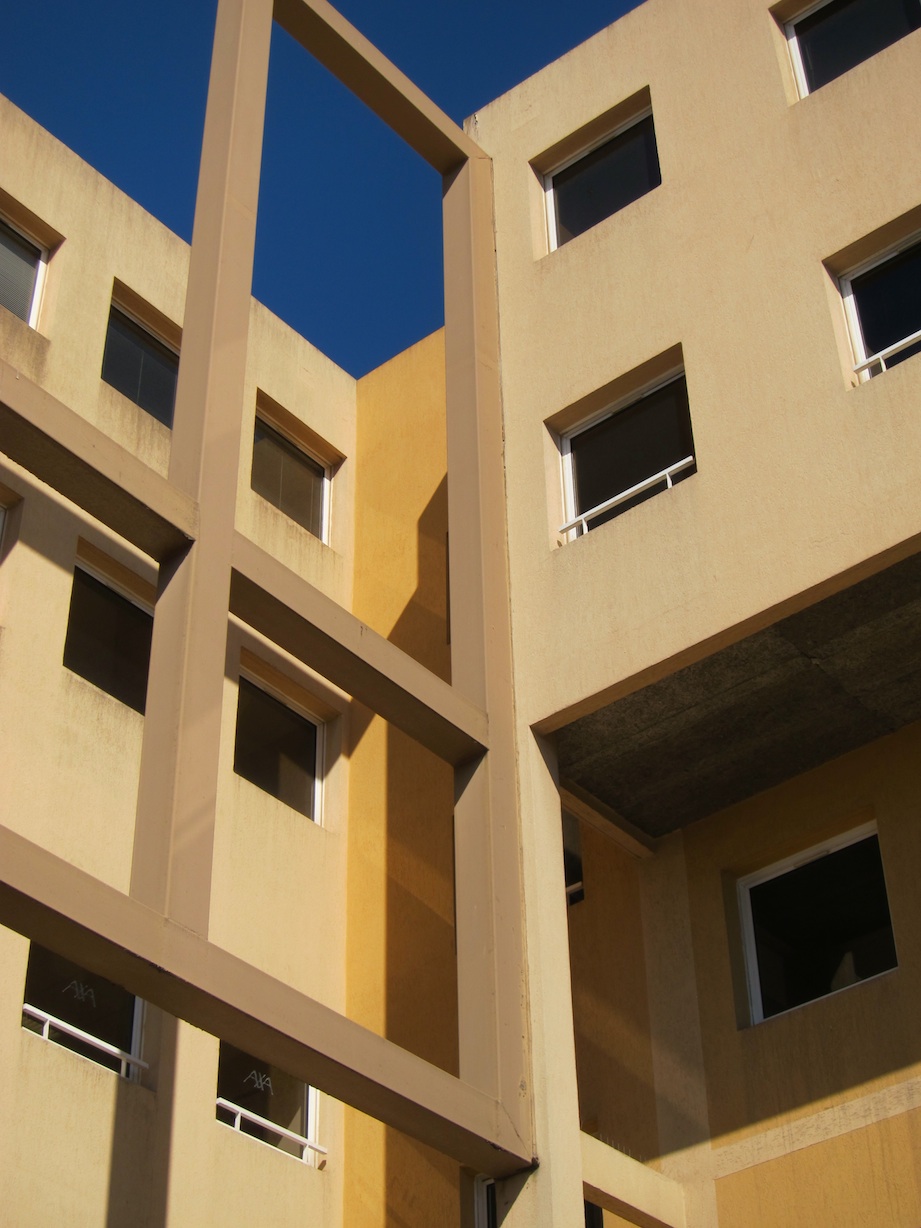
Residential building, Garbejaire
As Ballard explicitly states, Eden-Olympia’s style is late-modernist, minimal and self-effacing — “a machine above all for thinking in.” The exception to this gray architectural uniformity is the administrative headquarters, which displays a bombastic, “almost imperial grandeur, with its classical pilasters rising to a stylized post-modern pediment.” For Ballard, this is an unmistakable signal of the canker at Eden-Olympia’s core. “I detest postmodern architecture in any form whatsoever,” he wrote in 1995 (Modern Review no. 20). “All that self-referential jokery, all that pastiche, all that ornamentation for its own sake. It’s architecture as kitsch . . . It’s extremely retrogressive, nostalgic and, I think, in every sense corrupt.”
Sophia Antipolis, host to corporations such as Air France, Chanel, IBM, Canon and Hewlett-Packard, resembles Eden-Olympia in only the most general way. I spent three hours walking around, a lone pedestrian in the sun, in a landscape devised for wheels, and I saw no Eden-Olympia-like gate or main entrance, no visible perimeter, no cruising limousines or menacing security helicopters. The access roads twist and loop across the park between the roundabouts connecting the two- and three-story buildings that nestle unobtrusively in the tree-covered landscape. I had to wander off the road, peer through foliage, climb driveways, slip through barriers and cross private parking areas to get a closer look at the architecture, which tends to be unassertively modern, functional and inexpressive, whatever breakthroughs and innovations might be taking place inside.
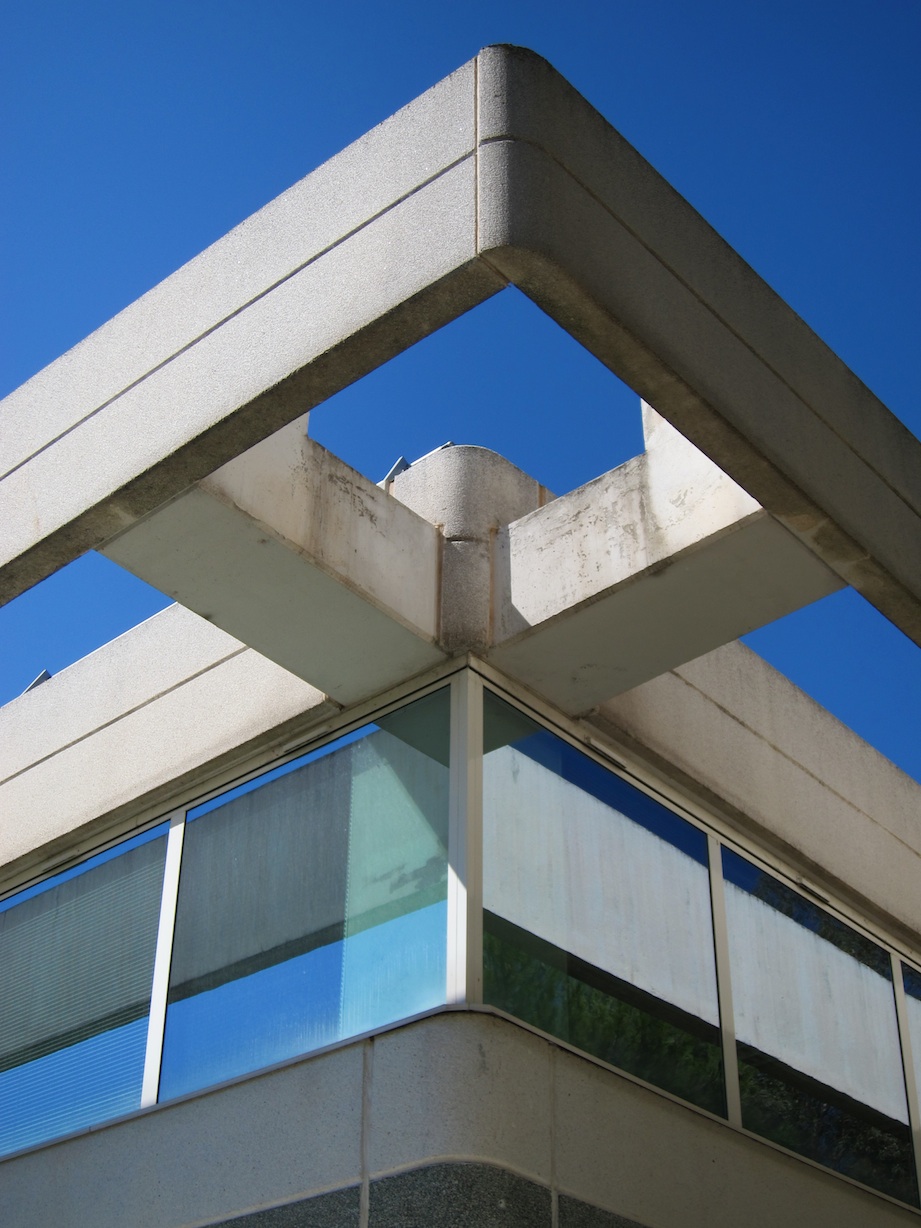
Thales, Sophia Antipolis
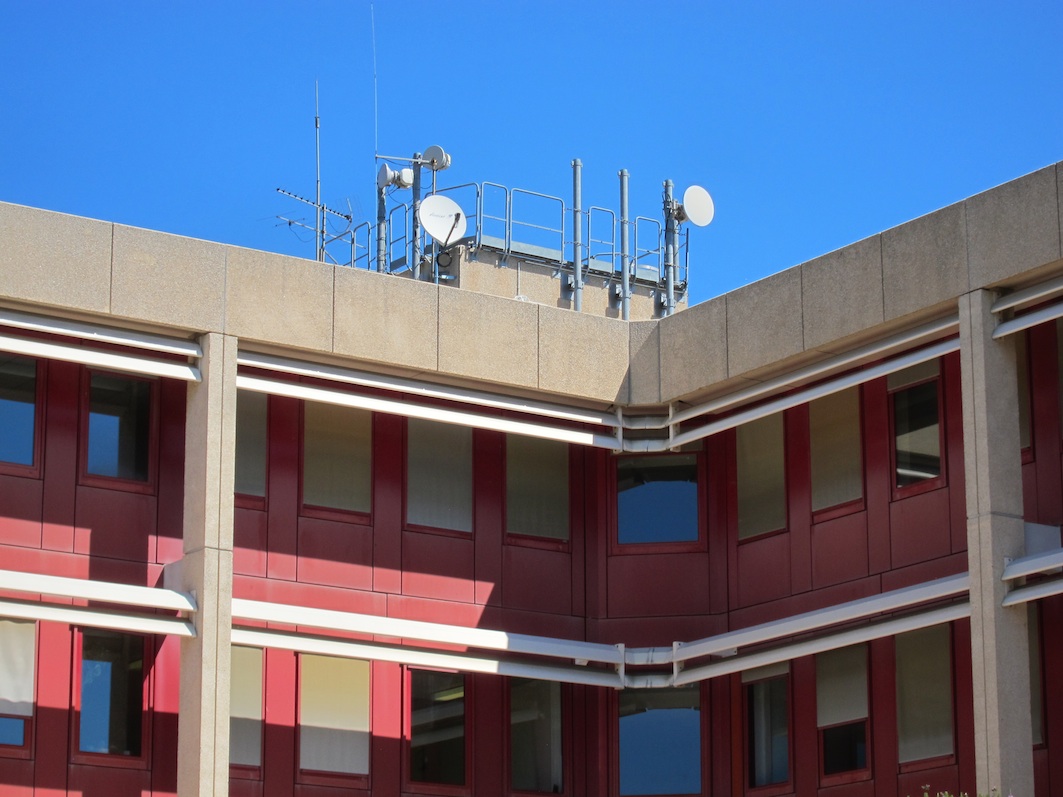
Laboratoire Elaiapharm, Sophia Antipolis
When I eventually stumbled across the unremarkable offices of Intel, a company with an indisputably global profile, I felt a small sense of triumph. Perhaps security men in dark glasses would appear from nowhere and order this suspicious intruder to stop taking pictures. But no one seemed to notice or care. At midday on a weekday, the business park was eerily tranquil, with barely a passing vehicle at times. The most Ballardian installation I saw was an encampment of mobile homes with satellite dishes and aerials, tucked away behind a cylindrical building that appeared to be empty, as though a team of techno-nomads had infiltrated the corporate parkland and temporarily occupied the site. They were busy inside or absent and there was no one to be seen.
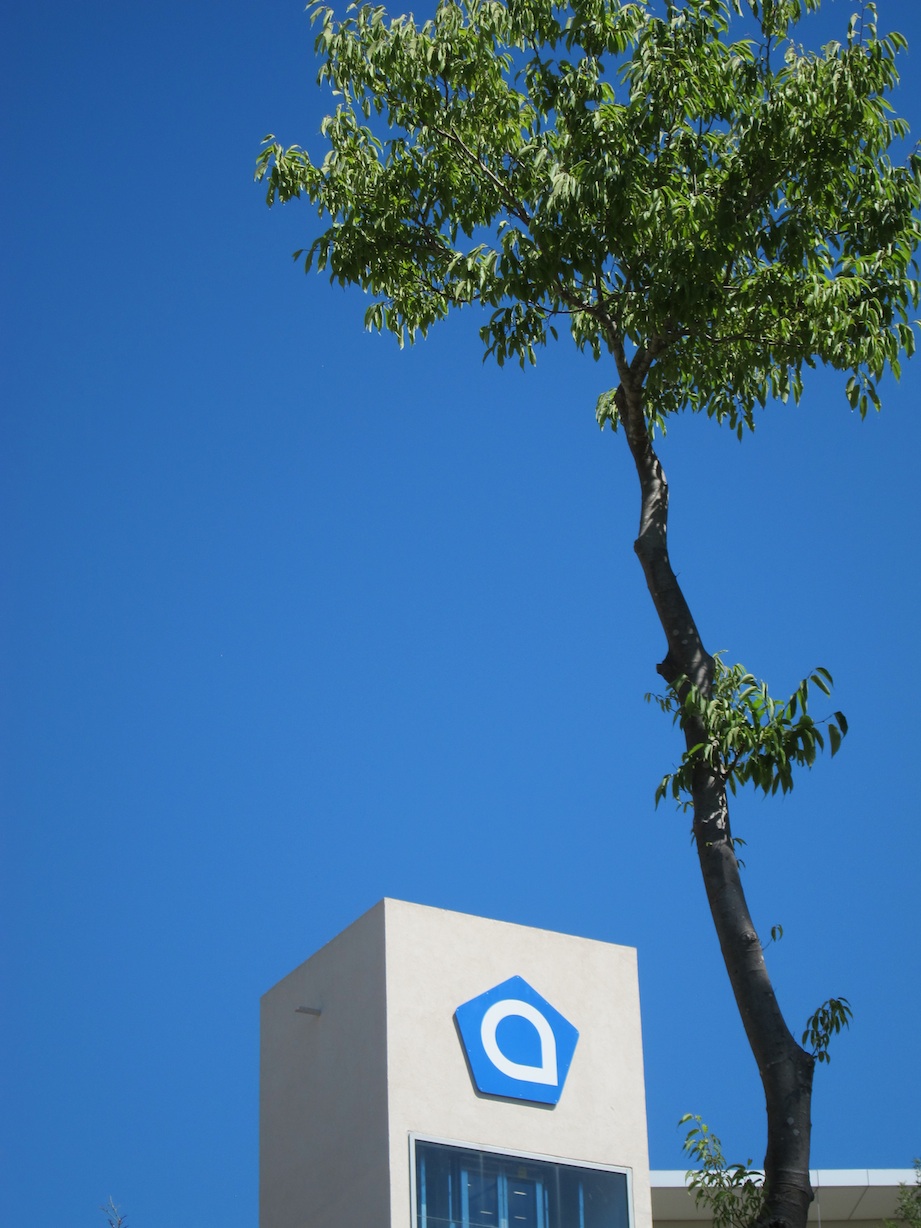
Atman Osteopathic Campus, Sophia Antipolis
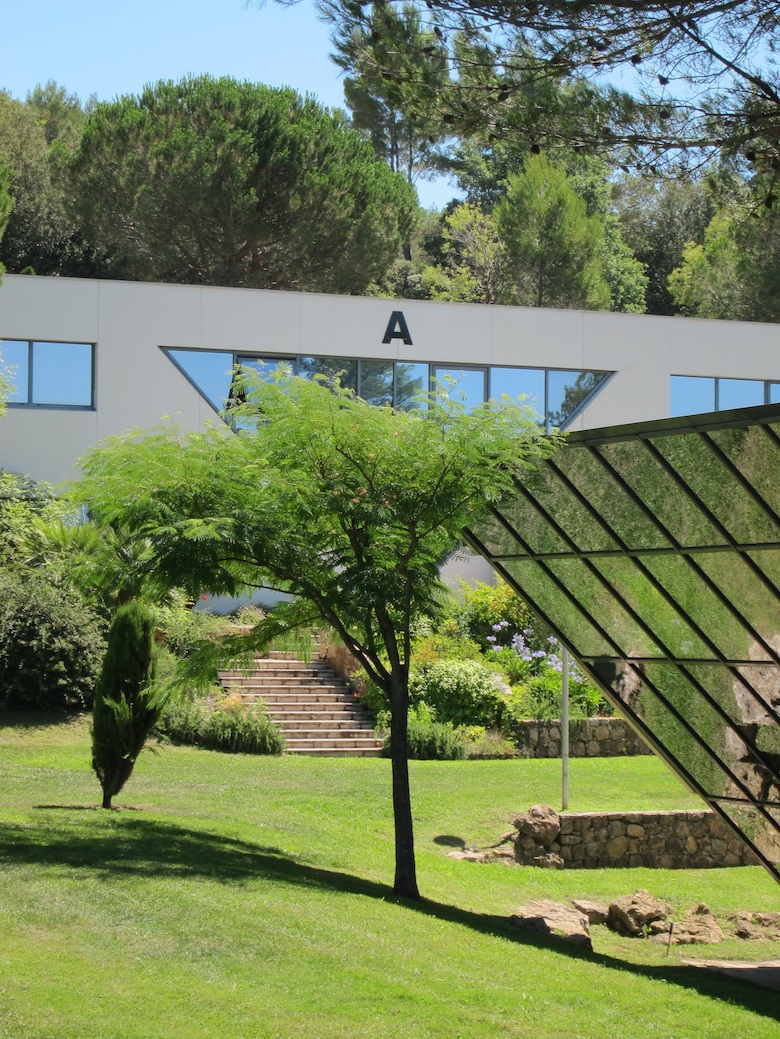
Building A, Les Vaisseaux office complex, Sophia Antipolis
Once again, as I prowled about, I wondered how much time Ballard had spent in Sophia Antipolis. In The Inner Man, a biography that has been criticized for many inaccuracies, John Baxter notes that while it’s possible Ballard visited this or another business park and spoke to employees, nothing in the novel’s acknowledgements suggests this. “Claire [Walsh] undertook much of the research, working online,” claims Baxter. That would have been more challenging in the late 1990s than it would be today. I was unable to speak to Walsh to confirm her role.
It is accurate, though, to suggest that Ballard borrowed only the parts of Sophia Antipolis that he needed for his novel of ideas, to bolster the disquieting fantasy of a secretive, closed-off, corporate enclave, where violence becomes a regulatory mechanism for maintaining peak efficiency in the work-obsessed executive elite. In his imaginary business park, Ballard rearranged the architecture and adjusted the landscape to amplify Super-Cannes’ sense of “gated-ness” and intensify the reader’s unease — I remember the feeling of architectural oppressiveness from my first reading, years before I visited these locations. By the novel’s conclusion, work has already begun on Eden-Olympia Ouest, a “vast urbanization larger than Cannes,” writes Ballard, almost twice the size of the original: an engine of psychopathy chomping across the idyllic landscape of southern France. “You’re about to create a major crime wave,” Sinclair protests to Penrose. “The crime wave is already there,” the mad psychiatrist enthuses. “It’s called consumer capitalism.”
Photographs: Rick Poynor
See also:
The Conceptual Advertising of J.G. Ballard
J.G. Ballard’s Terminal Documents
